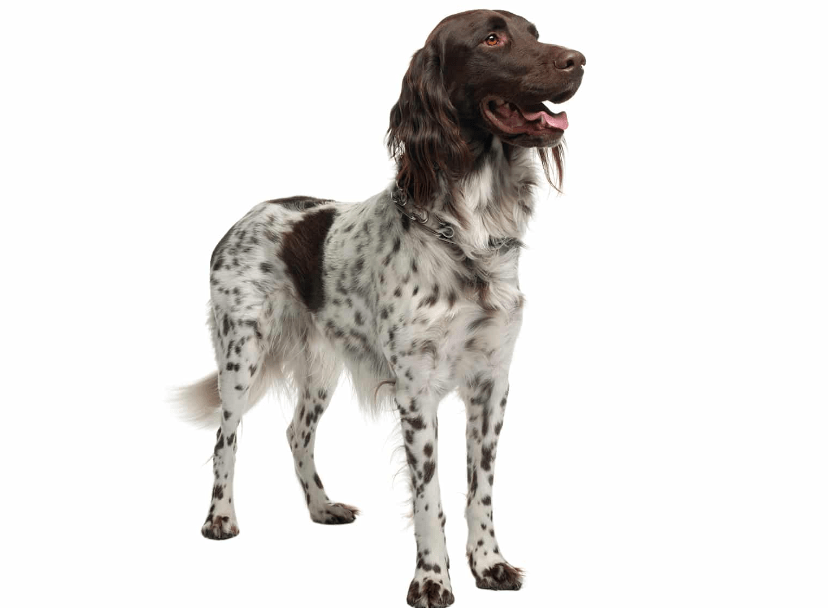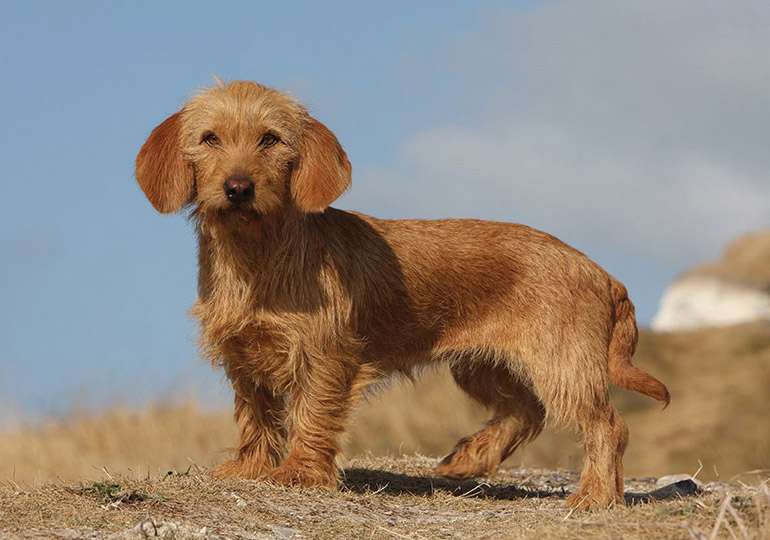
Description
Medium-sized with a strong, symmetrical structure that displays harmonic proportions and a great deal of quality and beauty. The dog has flowing lines and a well-flagged tail carried horizontally in an erect position. The dog should have a balanced appearance with strong hindquarters and a prominent, not overly blocky head. The hind legs have breeches, whereas the front legs are highly feathered. The coat should be straight or just slightly wavy, medium in length, lustrous, and dense. The dog should move gracefully, athletically, and far. The dog has broad brown patches on a backdrop of white ticking or solid.
Origin/History
The fundamental history of the Small and Large Munsterlander is the same. While both sizes have been in use in Europe since the 13th or 14th century, they are relatively new to the United States and Canada. Europeans frequently refer to the Small Munsterlander as the Kleiner Munsterlander and the Large Munsterlander as the Grosser Munsterlander. In reality, the sizes were divided at some point in the middle of the 19th century. German Spaniels from the Munsterland region of Germany are the ancestors of the Munsterlander. Although the existence of these dogs was first noted in 1870, it is thought that they had existed from the 13th or 14th century. It was revealed that there was Middle Ages art. Breeders started establishing a specific type for each size at the beginning of the 20th century by only mating dogs with particular traits to make sure those traits were passed on.
Temperament
The Large Munsterlander is extremely trainable and a quick learner. He has to be handled gently and given lots of praise because he is sensitive. He will need a lot of activity because he is a sporty breed. This also entails games that need him to think in order to keep his mind active. He does need ongoing instruction but is somewhat independent. Do not leave him unsupervised for an extended period of time because he will become destructive and a bother to your neighbours. The Small Munsterlander is a versatile and assured canine. He would thrive in a working household where he could put his training as a hunting dog to good use. He is affectionate and enjoys being the centre of attention, which makes him a fantastic family friend.

Care
Nutrition
You should give your Small Munsterlander a formula that will meet his specific digestive demands as he goes through different stages of development. Many dog food manufacturers provide sport formulations that include the protein/fat ratios required for breeds with active lifestyles. A medium-sized breed, the Small Munsterlander has a lifespan of 12 to 14 years. Choosing what to feed your dog is a personal decision, but the best method to choose how frequently to feed him as a puppy and the best adult diet to lengthen his life is to consult your vet and/or breeder. Fresh water that is clean should always be accessible.
Training
Like other adaptable breeds, this one matures very slowly. Most Small Munsterlanders are not mentally mature until they are two years old. It’s critical to be ready for a fully developed, powerful dog with a teenage brain for at least a year. It’s critical to keep in mind that they were developed to be both a family member and a hunter’s assistant. These amiable dogs prefer to be raised in the home and require a lot of time and interaction with the human family to realize their full potential.
Small Munsterlanders are typically good with children and understanding of a child’s unpredictable behavior. However, just as with any dogs, it’s crucial to supervise and socialize them with kids. A dog should never be left alone with young children. It’s crucial to figure out how to incorporate your Small Munsterlander into your hobbies. He will be able to work for you and spend time with you as a result, making him a happy and well-adjusted companion.
Exercise
Although they make excellent family pets, Small Munsterlanders do need regular exercise and mental stimulation. The breed was created to hunt, and they are happiest when engaged in such activity. This hunting breed was created to hunt, point, retrieve, and track wildlife for a variety of purposes. Due to the breed’s hunting-related ancestry, they are quite active and require regular exercise to burn off their excess energy. If you choose not to go hunting with your Small Munsterlander, make sure to provide him with alternative ways to exercise, like as running or playing in a secure place. As their natural tendency is to hunt, they must be kept under supervision outside. They will wander and engage in self-hunter behavior if adequate stimulation and exercise are not provided.
Grooming
A weekly brushing will keep the coat in good condition, and a weekly bath will keep them clean and looking their best. Due of their cyclical shedding, little Munsterlanders require more regular coat maintenance in the late spring and early autumn. Regular nail trimming with a clipper or grinder is advised to prevent overgrowth, splitting, and breaking. Their ears should be checked frequently to prevent wax and debris buildup, which can cause infection. You should brush your teeth frequently.
Table





